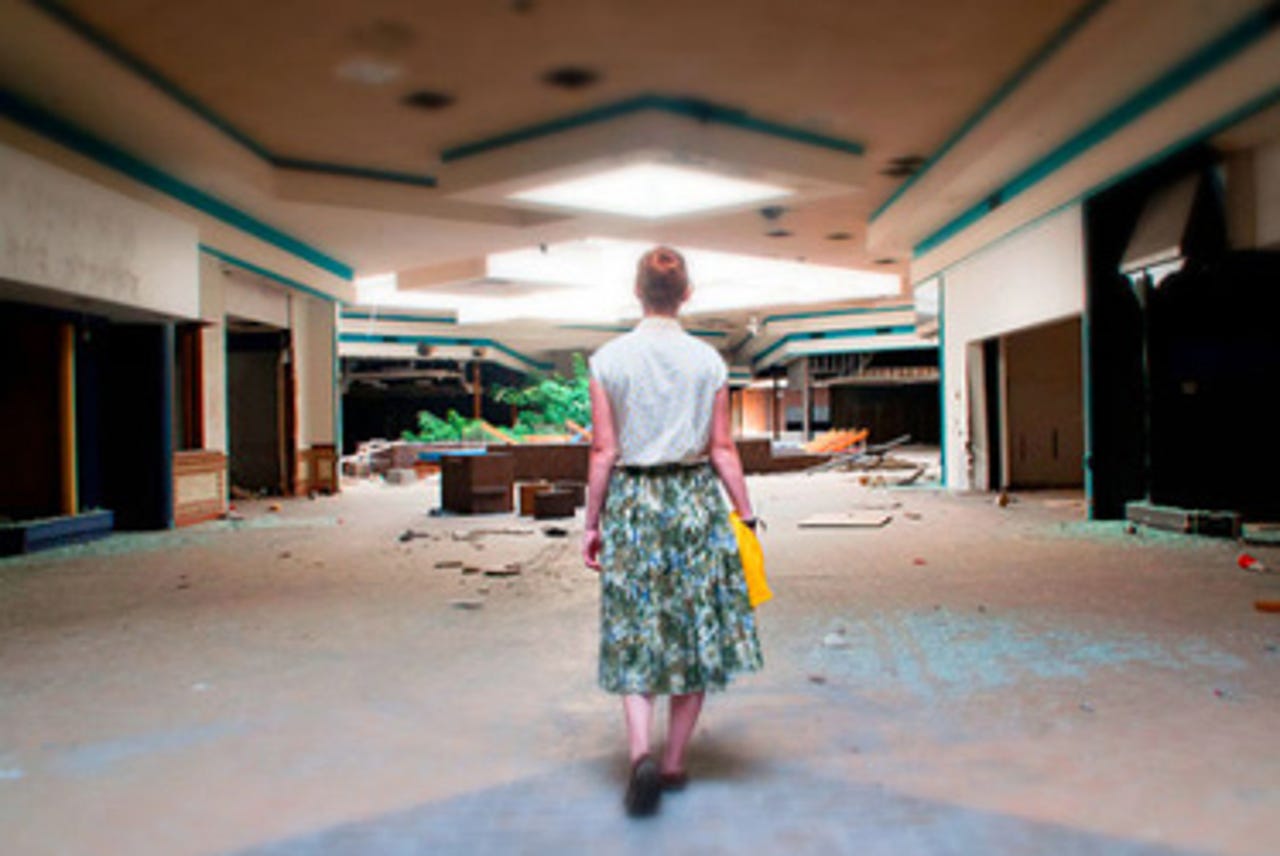Retail in 2021: When clicks have buried bricks

Editor's Note: Back during the holiday shopping season of 2011, when the iPad and Siri were new, and the Amazon Echo, Uber and drone deliveries were just a figment of our imagination, I wrote a speculative piece about what the future of shopping might be like, ten years in the future, from the perspective of a typical up-market consumer, named "Mindy."
With the proposed $14B purchase of Whole Foods by Amazon some six years later I thought it might be a good time for us to see if the technologies and market trends that were brought up in this fanciful but near-futuristic piece are any closer to reality in June of 2017 -- Jason Perlow
"Bitch, deactivate the alarm. I'm up."
"Prime me my standard double right now, Bitch. I've got some shopping to do first."
YES MINDY. DOUBLE ESPRESSO, SHORT PULL. ONE SPLENDA.
ESPRESSO IS READY TO PULL, MINDY.
"Yes Bitch. You think I'm pissed off now, wait until we run out of coffee."
"Screen, Bitch. I need to buy some clothes for our Christmas trip to Saint Martin."
Bitch would have already told her if she was putting on the pounds anyway.
"Tee shirts, and bathing suits please."
Everything personalized, just the way she liked it.
PROCESSED. I'VE SAVED THE INVOICE IN YOUR INBOX.
PROCESSED. REMINDER SENT TO JOSEF.
But for Mindy it wasn't about the gas, since her plug-in electric Cadillac Voltec hybrid SUV got really good mileage. It was about the aggravation.
In 2016, Macy's shut down their brick and mortar operations and became a catalog supplier to Amazon and other e-tailer portals. Other large retail chains, such as Sears (which returned to its catalog roots) began to do the same.
Without anchor department stores, the malls themselves had a hard time staying open.
In 2017 two of the largest shopping centers in Northern New Jersey closed down.
By 2019, nearly 80 percent of the retail space in the entire state had been vacated. Many of the smaller strip malls were bulldozed and were turned into residential zoning and parks again.
Some of it, such as the two larger malls which were fallow for several years, were re-configured into more entertainment-style complexes with "Showroom" stores for the types of items that didn't make sense to buy or made it difficult to test out online, such as large appliances or even cars.
But they didn't need to keep things in stock, it was all fulfilled by demand, and delivered right to your front door.
And some of the empty space was even reclaimed for urban and suburban agriculture projects. Northern New Jersey could finally call itself part of the Garden State again. Huge hydroponic greenhouses filled the land plots where other malls once stood.
Now you could get ripe Jersey Fresh tomatoes and other produce at farmers markets year-round.
Of course, a lot of consolidation occurred as well. Costco and Wal-Mart merged to become the largest brick and mortar merchant for food, consumables and durable goods -- Costmart, although much of what they sold went through their own electronic portals, as well as through others such as Amazon.
Amazon itself merged with Target, which it used as local retail showrooms for large durable goods and distribution centers.
Best Buy merged with Staples and ended up grabbing the business brand names and customer lists of every single mid-sized regional store chain you could imagine, once many of them declared Chapter 7.
Mindy finished her coffee. Her stomach started rumbling. She needed breakfast. But maybe it might be a good idea to think about what to cook for dinner.
"Bitch, what does our food inventory look like?"
MINDY, BASED ON PRODUCE AND PROTEINS IN THE REFRIGERATOR AND FREEZER, AND THE EXISTING MENU PLAN, YOU SHOULD SHOP FOR FOOD TODAY. THE SCALLIONS AND BROCCOLI IN THE FRIDGE SHOULD BE CONSUMED AS SOON AS POSSIBLE, AS SHOULD THE 1LB OF FLANK STEAK.
Shopping in the future: The tech behind retail
Ah, right. She had planned for a stir fry tonight. Every item in the fridge, freezer, and pantry had a RFID tag. Bitch knew everything there was to eat, and how quickly it was being consumed. Biogas detectors in the food bins and on the refrigerator shelves could also make Mindy aware of what was going ripe. It really cut down on food waste that way.
Based on what was in inventory, It could recommend dishes to cook, or conversely, Mindy could stock up the house with food based on recipes she tagged while watching interactive TV or reading her favorite cookbooks on her Kindle Fire or her husband's iPad.
Some people drove down there to pick up their orders late at night, just to avoid traffic.
Her oatmeal and shower would have to wait until after her conference call.
What do you think shopping will look like in 2021? Talk Back and Let Me Know.
